"Super" Lemonade
Cooking chemistry for hot days
By Evan Meade, 2022-09-05 18:51:53, updated 2022-09-05 20:41:27
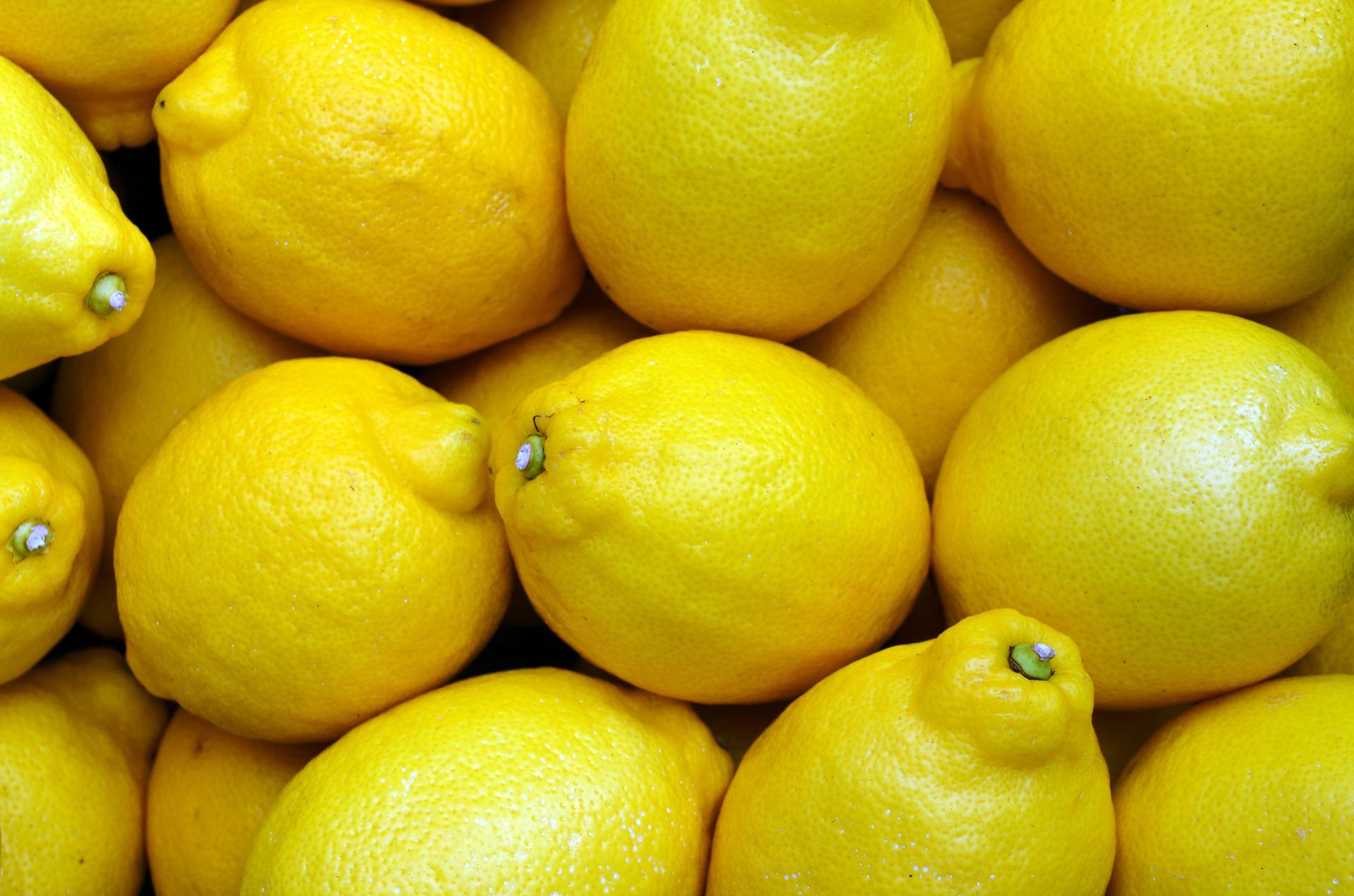
A couple months ago, I saw a video by mixologist Kevin Kos describing the concept of "super juice." While that topic deserves an entire post in its own right, the video introduced me incidentally to the concept of oleo-saccharums. These fancy-sounding mixtures are simply the result of peeling citrus fruits, covering their zest in sugar, and waiting for the zest's essential oils to be drawn out. After about an hour, one is left with a thick, sugar-y goop that is packed with flavor compounds which, if one were simply juicing the fruit, would otherwise be discarded with the pith. As such, this method can be used to maximize the flavor extraction from a single lemon or lime by augmenting their juice with the zest's oils.
After turning over this concept in my head for a while, I was inspired to try it out for myself by using it to make lemonade. After all, that's basically just a mixture of lemon juice, water and sugar. So effectively all I was doing was substituting plain sugar for a lemon oleo-saccharum to pack an extra lemon-y (but not extra sour) punch. Following a very tasty pilot test, I dug a little deeper into the concept. After some research, I found a similar technique in a recipe by Chef John with actual proportions listed. I quite enjoyed that batch as well, though it was a bit sweet for my taste. Either way, it was nice having the proportions laid out for me ahead of time. They made it very easy to prepare the lemonade without too much thought or effort, which are in short supply on hot summer days in Texas. So I set out to test varying proportions of the ingredients (lemons, sugar, and water) to find an optimal, repeatable recipe.
To test these ratios, I first found the approximate proportions per lemon by mass for both sugar and water in Chef John's recipe. This worked out to about 40 g sugar and 200 g water per lemon. Since I thought his recipe was on the sweeter side, I chose 30 g sugar and 200 g water (hereafter 30/200) as my central testing point, and varied it in a 3x3 configuration for 20, 30, and 40 g of sugar and 175, 200, and 225 g water per lemon. Right off the bat, we can compare the "simple syrup" ratios of these 9 configurations. That is, the ratio of sugar to water.
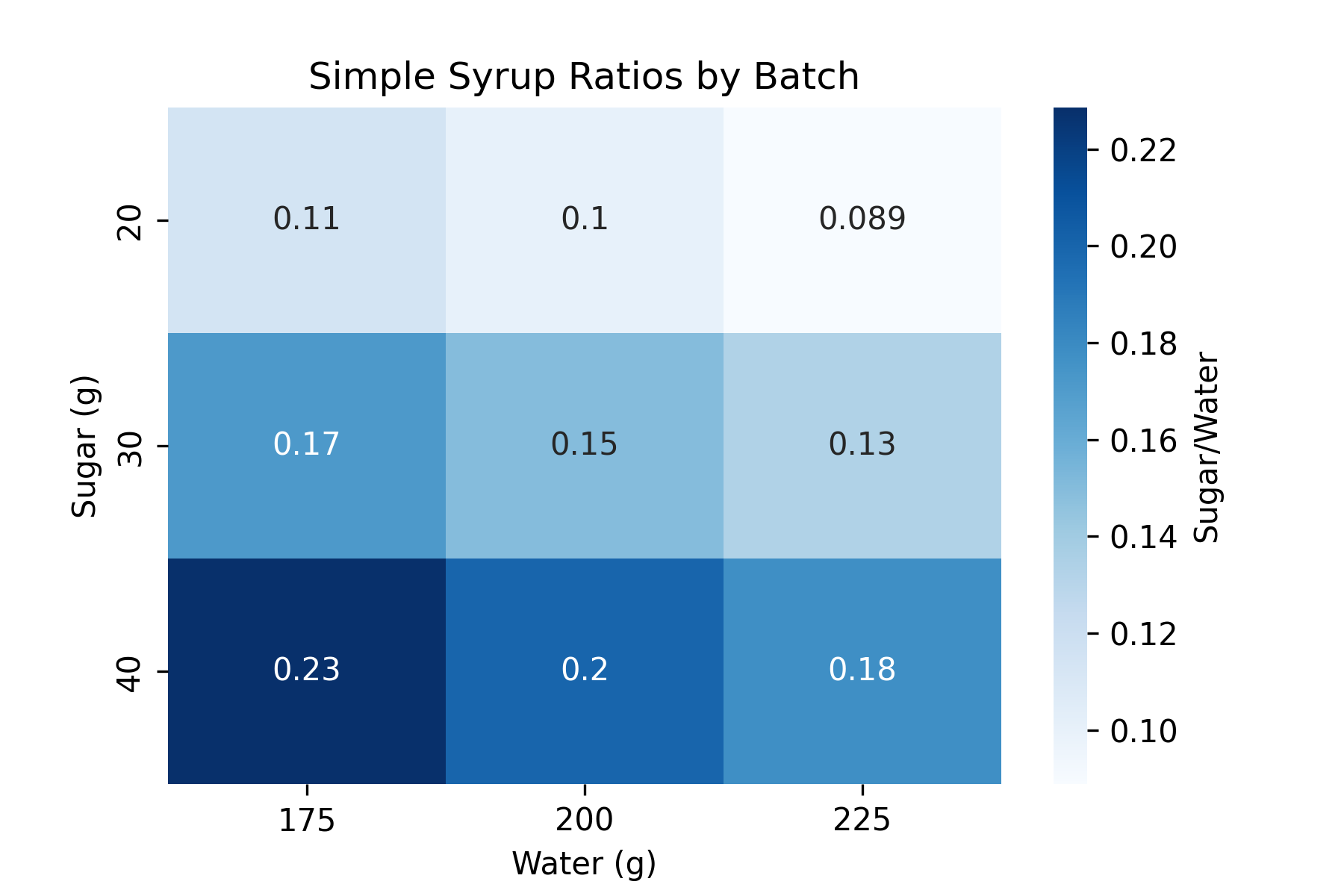
This plot brings up a key insight that the perceived sweetness of a lemonade is not solely based on how much sugar is added. Rather, it is the amount of sugar added per volume which determines the sweetness. At these proportions, one can make minor adjustments to the overall sweetness by manipulating the amount of water added, and more coarse adjustments by adding or subtracting sugar directly. For reference, Chef John's lemonade worked out to around a 0.2 simple syrup ratio.
Basic Recipe
Before getting into the weeds of the experiment, here is the basic skeleton of the recipe used by both myself and Chef John.
- Zest lemons and cover in sugar. Let rest to form oleo-saccharum, about 3 hours.
- Bring water to a boil, then kill heat and add oleo-saccharum. Stir to combine and let steep for 5 minutes.
- Strain out mixture into bowl and let cool for 30 minutes.
- Add juice of peeled lemons to cooled mixture.
- Chill in fridge until cold, about 12 hours.
- Serve.
That's it! Nothing super complicated, but using that oleo-saccharum with the peels instead of just sugar and lemon juice makes a world of difference. The lemonade can become much more complex and lemon-y without being pure acid or sugar. Of course, the devil is in the details, and in this case the question is what ratio of lemon zest, lemon juice, sugar, and water to use. One limiting assumption I put in place was that I wanted to use all of the zest and all of the juice from a given lemon, at least for this initial test. Part of the beauty of oleo-saccharums is the ability to use the entire citrus without any waste, so I didn't want to leave any of the zest or juice behind as that would feel a bit self-defeating. That just left me with the sugar and water to vary in proportion to each other and the lemon.
Methodology
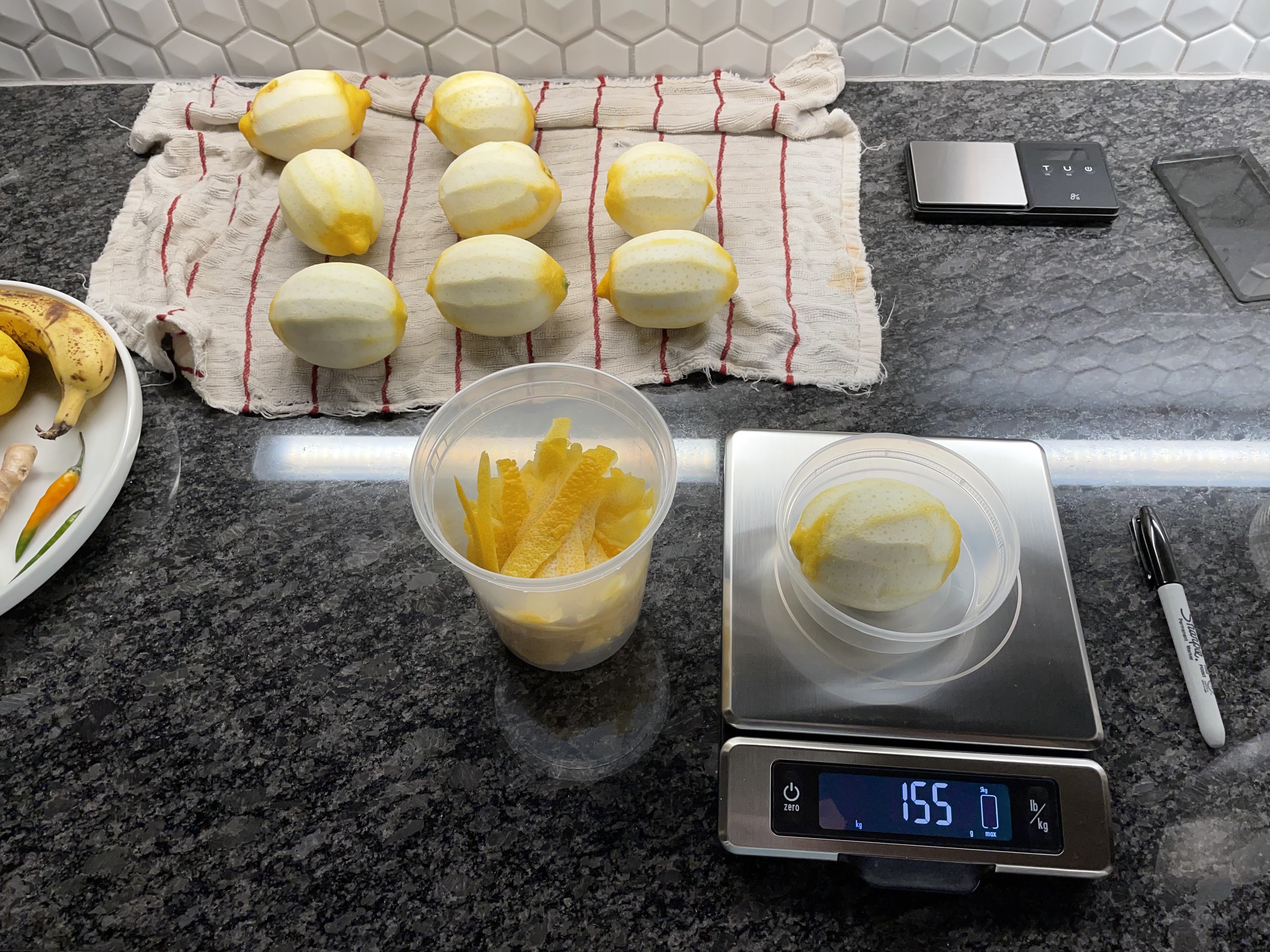
I bought 9 large lemons from Central Market in Dallas, Texas. It's July, so it's still a bit early for lemon season where I live, but they looked fresh enough. I began by peeling each of them and weighing their zest. I then combined all the zest and divided it by mass so each test batch would be proportional to my average lemon. I would later do the same with the lemon juice. The results of those lemons' characteristics are below. Each batch ended up with 18 g of zest and 47 g of juice (except for the 40/225 batch which received only the remaining 42 g of juice, a -10.6% error likely due to scale rounding errors).
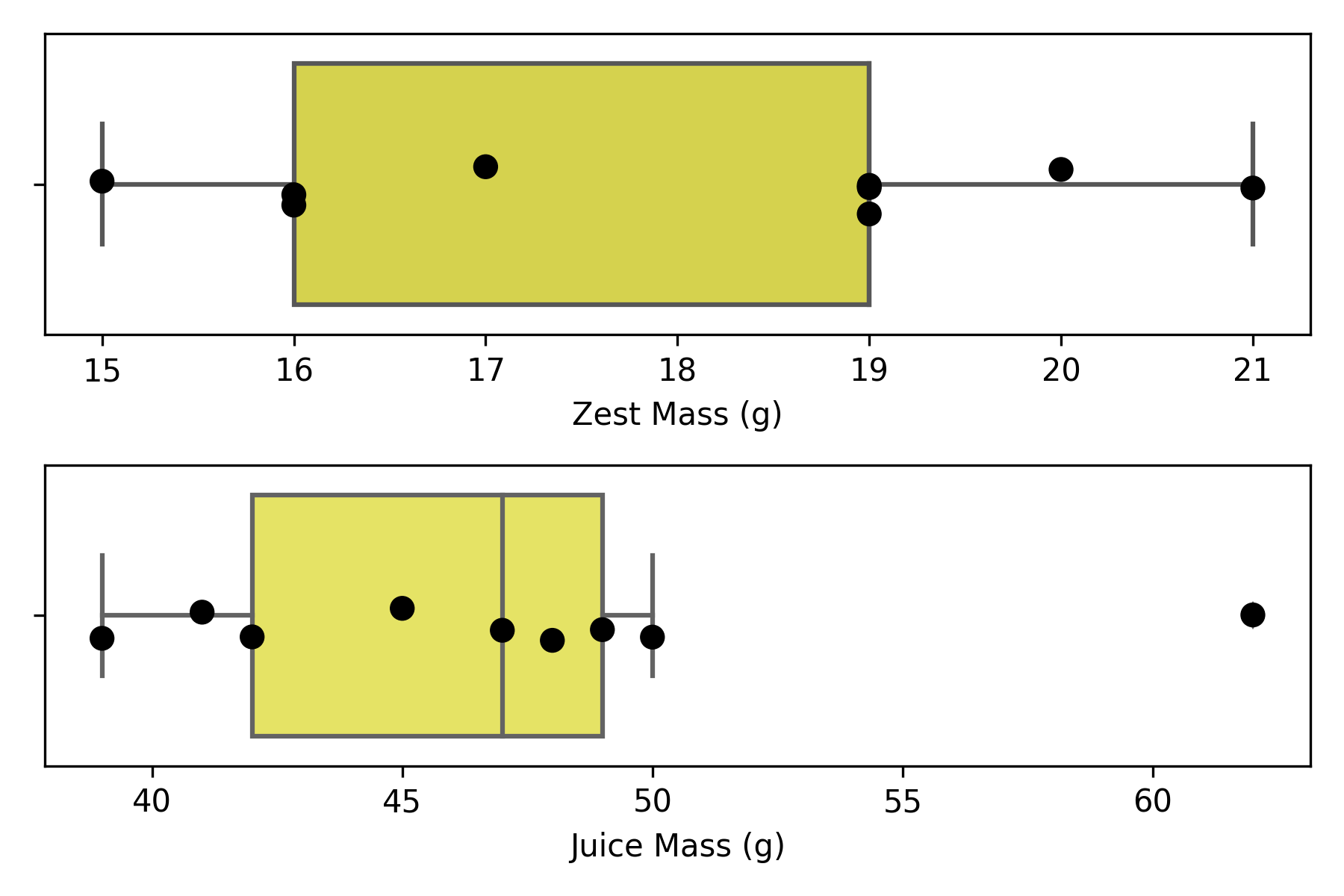
The one outlier in juice mass was a lemon with a particularly thin pith. However, even this outlier doesn't meaningfully skew the data. As you can see below, the average lemons as constructed by both mean and median are almost identical. Basically, the yield of zest or juice you get from a lemon appears to be approximately normally distributed. You are unlikely to get a lemon with 400 g of zest or 2 g of juice. They will fluctuate around some mean yield depending on varietal, season, etc. So, if you shop at the same place consistently, a certain number of lemons are likely to give you very similar amounts of both juice and zest. This is a useful fact since we are attempting to construct a consistent, precise recipe which depends on these ratios of zest to juice. Of course, these ratios are likely to differ if you buy significantly different lemons from mine, such as smaller regular lemons or larger Meyer lemons. Taste may differ as well, as Meyer lemons in particular are less acidic than regular lemons and contain different flavor oils.
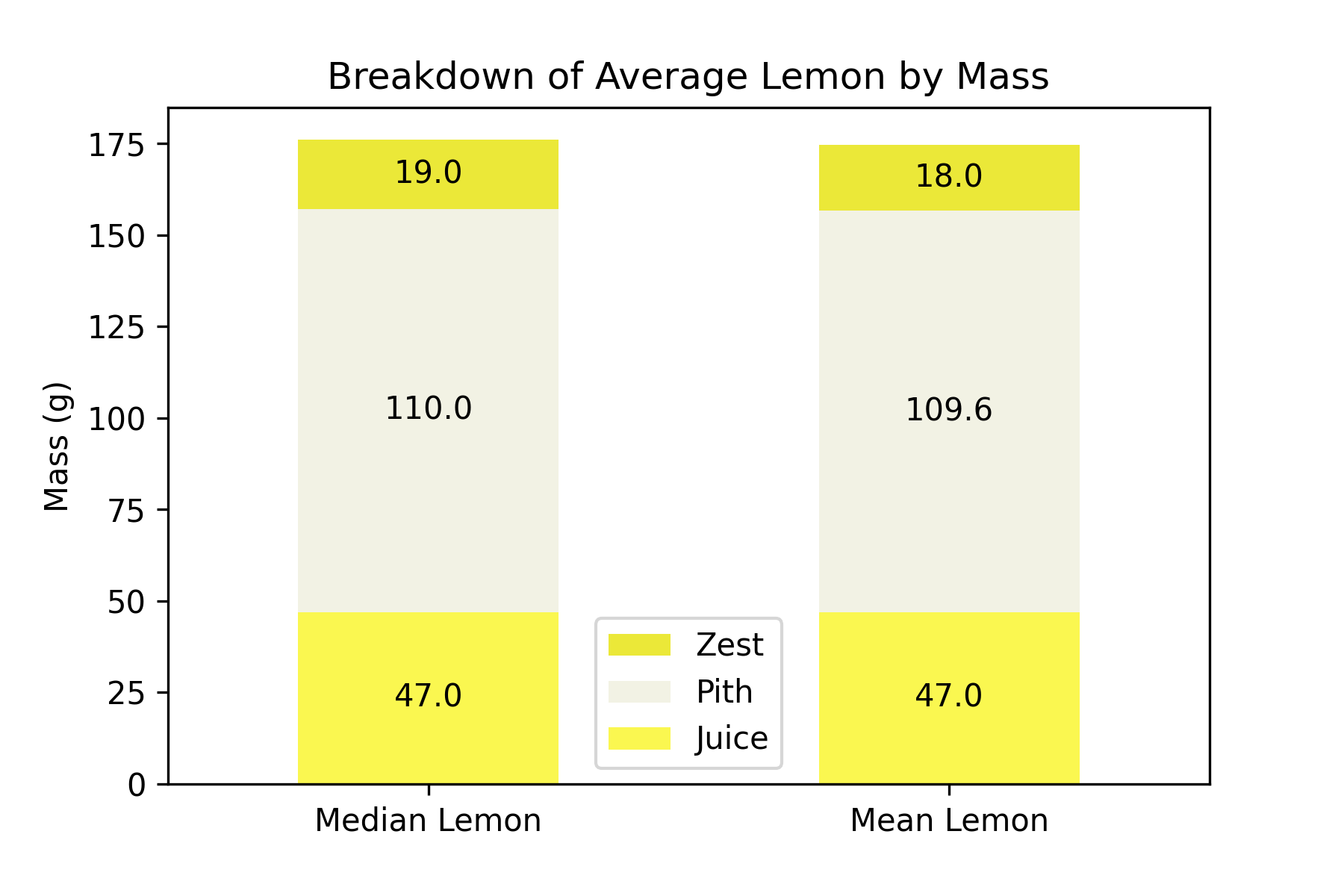
After analyzing the lemons, I added the corresponding amount of sugar to each batch's container, labeled with the intended amount of sugar and water. I shook each container for a couple seconds to coat the zest. They sat on the counter for 3 hours.
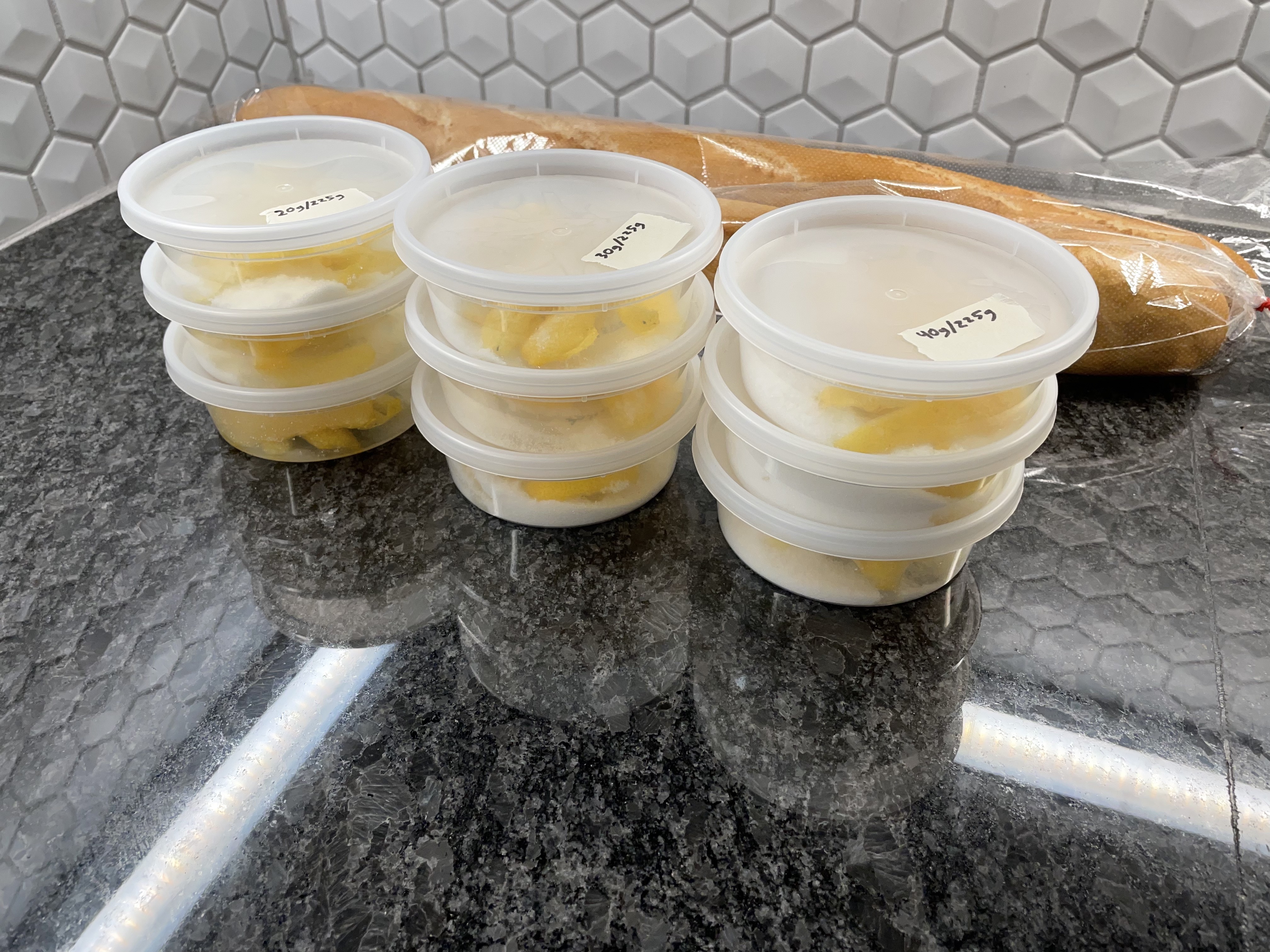
Once they were done sitting, I inspected the containers. I noted that the containers might have been too big for such small batches of oleo-saccharum as the zest seemed only to sit next to the sugar, not under it. This was especially apparent in the 40 g of sugar containers, which had the sugar shoved to one side loosely covered in zest. However, when tilted, the mixture held firm, indicating it had still been able to extract a meaningful amount of oil. So maybe my fears were misplaced.
I then successively boiled the mixtures in water and added the lemon juice as described above, creating the final batches. I let them chill in the fridge overnight, about 12 hours.
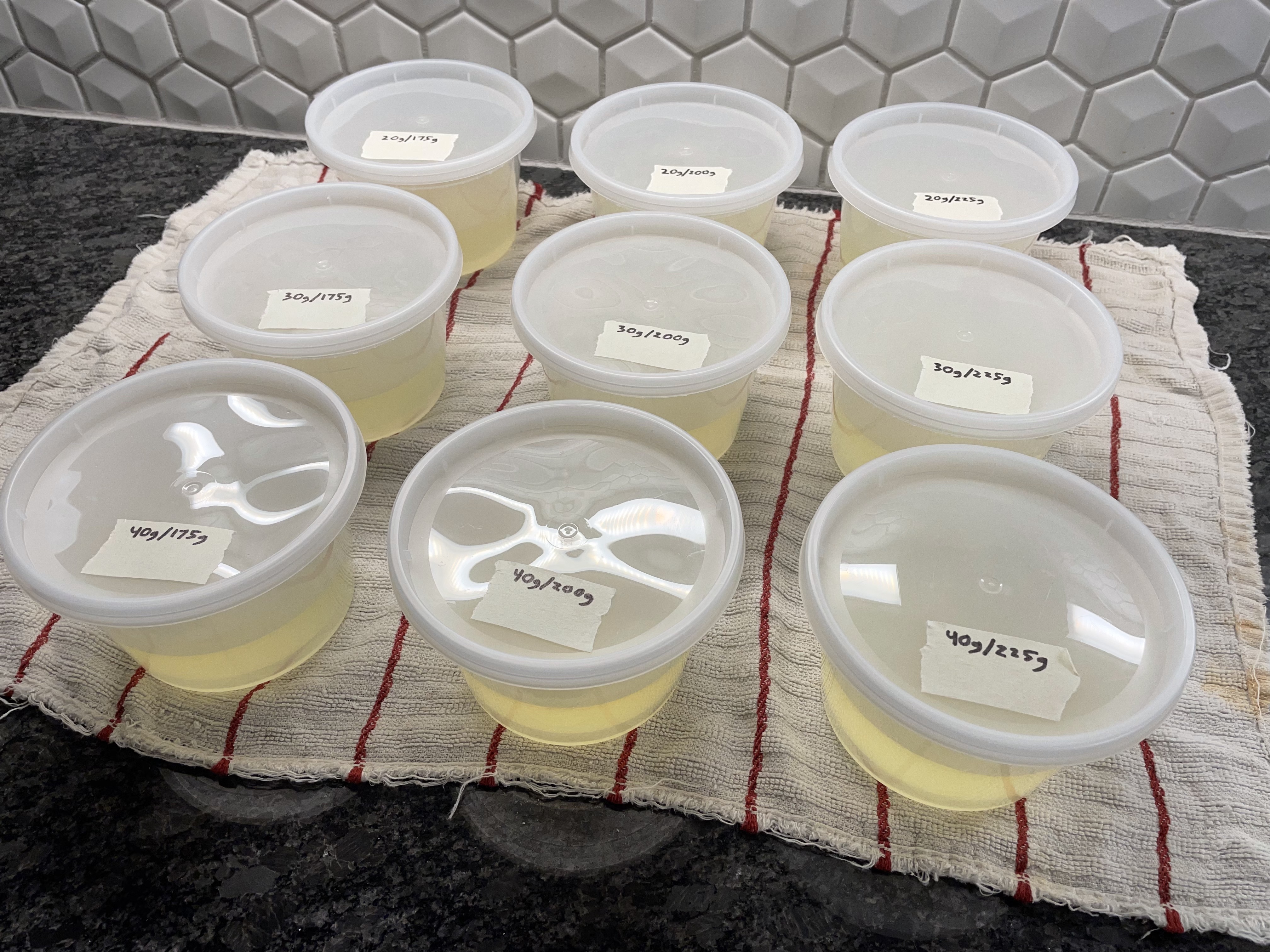
Tasting
In order to minimize tasting bias, I randomized the tasting order using Random.org. For each batch, I began by taking the mass of the final product to calculate an overall yield for the recipe. Then, I stirred it for 5 seconds to account for any settling, poured about 1 finger's worth into a cleaned low ball glass, and cleansed my palette with water before and after.
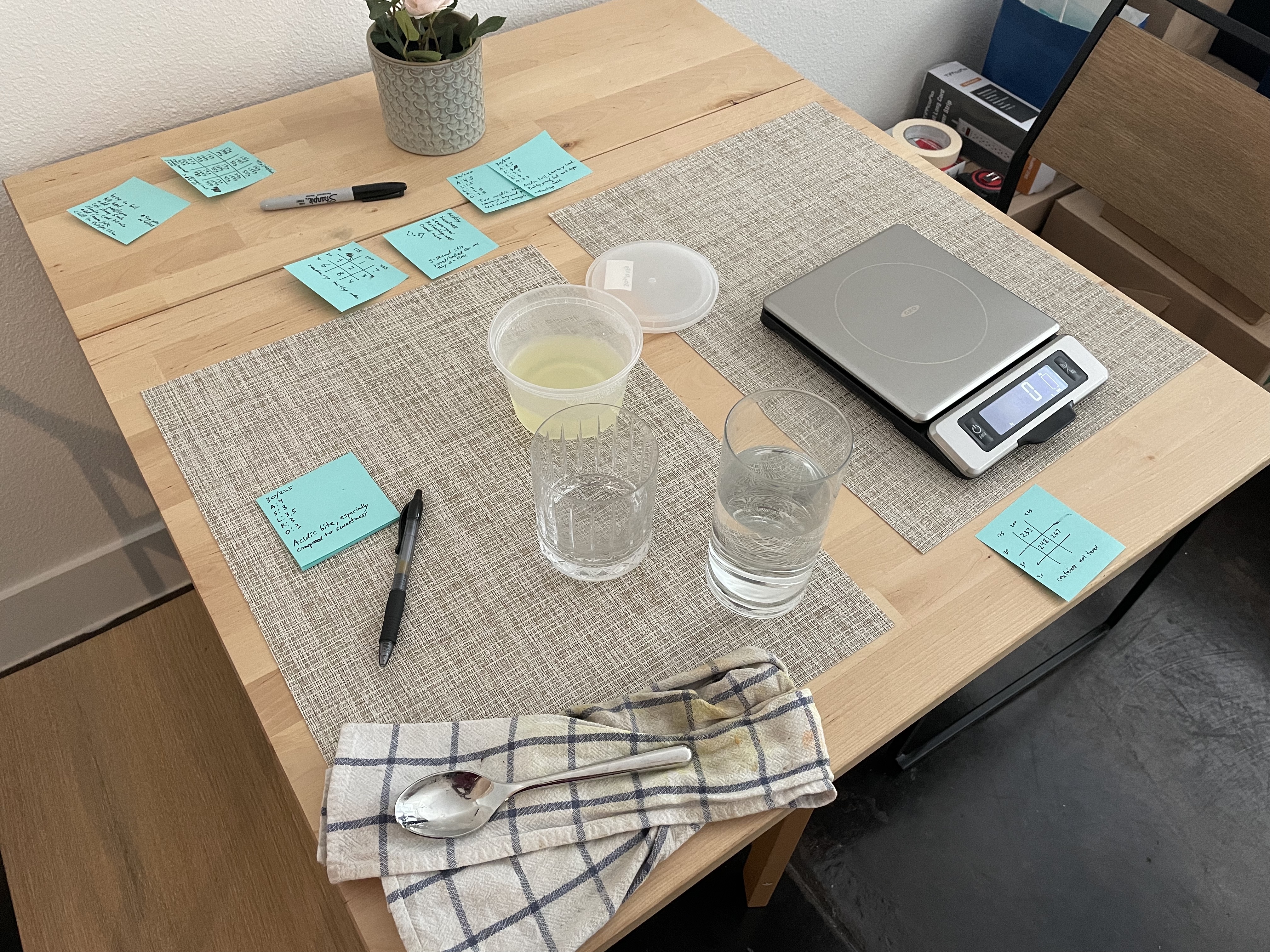
I was scoring each batch on five key criteria, as well taking general notes. For consistency, I took a separate sip for each criterion. The criteria are as followed, all scored on a scale of 1-5, inclusive, where 1 represents the least amount of that property imaginable for a lemonade and 5 represents the most:
- Acidity
- Sweetness
- Lemon-yness (how much does it remind you of lemon flavor, minus the acidity and sweetness?)
- Refreshing-ness (how much does it quench your thirst after a hot summer day?)
- Overall taste
The results are shown for each metric below:
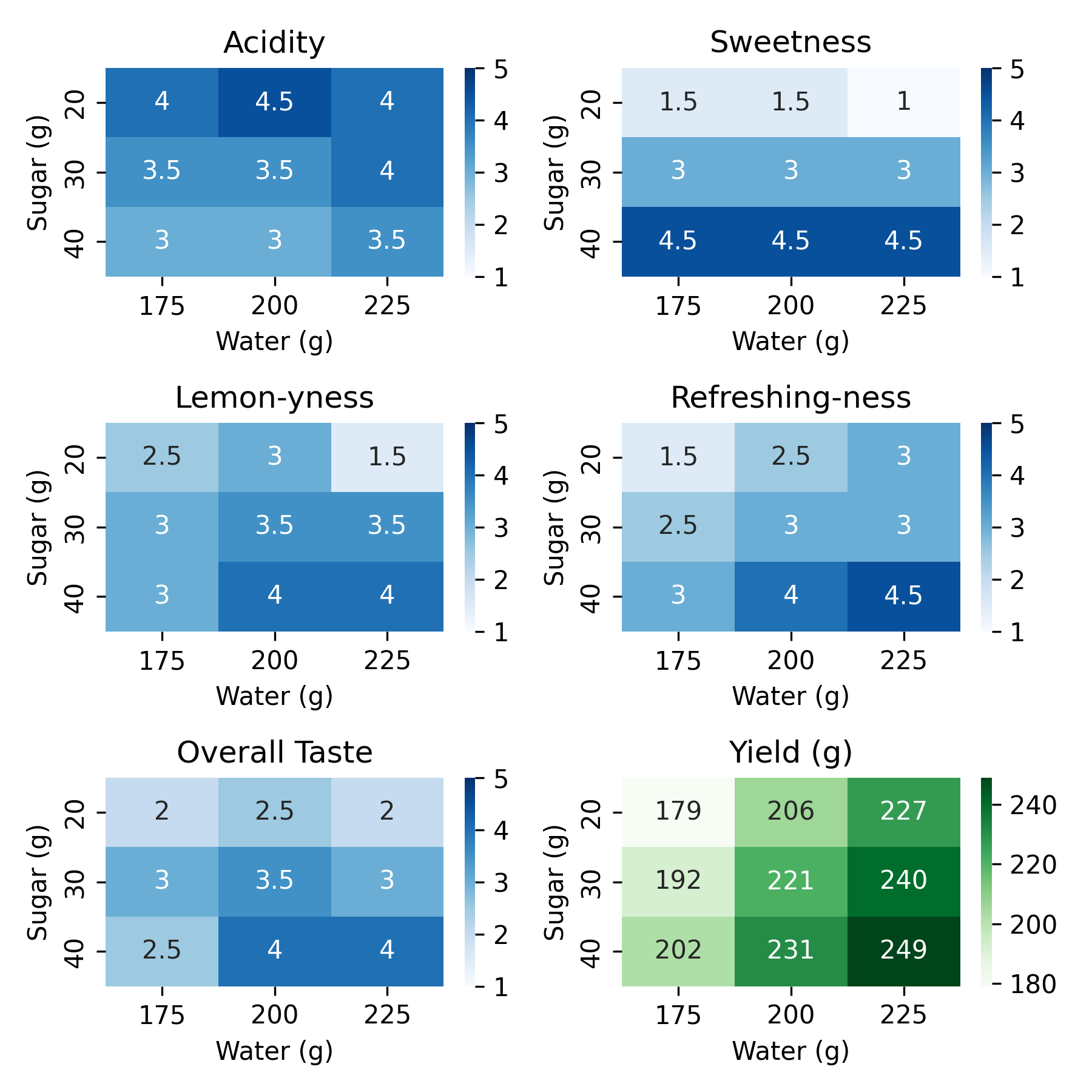
While this was not a blind experiment, the randomized order helped me lose track of any patterns that were building up in my ratings. That being said, it was gratifying to see some patterns show up in the data after the fact. Most of the scores resulted in relatively continuous heatmaps (i.e. two neighboring squares are likely to have more similar values than two distant squarees). For instance, the sweetness ratings formed almost uniform bands simply determined by the amount of sugar added. This result is in-line with the simple syrup ratio plot from earlier, where we saw the largest steps determined by changes in sugar content and only smaller steps shaped by the amount of water added.
Beyond the consistency of the data, we can draw out meaningful trends in the actual flavor as well. Namely,
1. Acidity/Sweetness Trade-Off
While it is not a hard-and-fast rule, there is an approximately inverse relationship between perceived acidity and perceived sweetness. On first glance, that seems false, since one can make something both more acidic and more sweet by adding more of those components to the mixture. But note that these ratings are only the perceived acidity and sweetness, and our tongues are easily fooled. For instance, on average, lemons are more acidic than limes, but most people would probably say that they are significantly less acidic. That's because lemons have approximately twice as much sugar as limes, a fact which our sense of taste translates into being less harsh and acidic. So the reality is that one cannot have a lemonade which is both very acidic and very sweet. At some level, a decision must be made in this trade-off.
2. More Sugar -> More Lemon Flavor
Empirically, for the ratios tested here, I detect a more robust lemon flavor profile when there is more sugar present. I have two possible explanations for this:
One, it may be that more sugar leads to more efficient oil extraction in the oleo-saccharum. By overcoating the zest in sugar, there may be more room for the oils to diffuse within the mixture, making a more complete extraction.
Two, this may go back to the complicating factor of sweetness in our flavor perceptions. Since lemons contain a significant amount of natural sugars, it may be that the oils extracted from the zest don't fully taste like lemons without the corresponding amount of sweetness that they usually enjoy. After all, taste is a product of both the flavor compounds present and the overall environment they exist in.
3. Acidity/Refreshing-ness Trade-Off
Again, while a perfect inverse relationship cannot be demonstrated with 9 subjective measurements, one can at least infer a trade-off between acidity and refreshing-ness from the plot. This is an intuitive relationship, as overly acidic things tend to have a drying effect on our mouths. That's why we pucker and salivate when we drink lemon juice or suck on sour candies. The more sugar and water there is to dilute the lemon juice, the more refreshing the lemonade will be.
4. A Refreshing Lemonade is a Good Lemonade
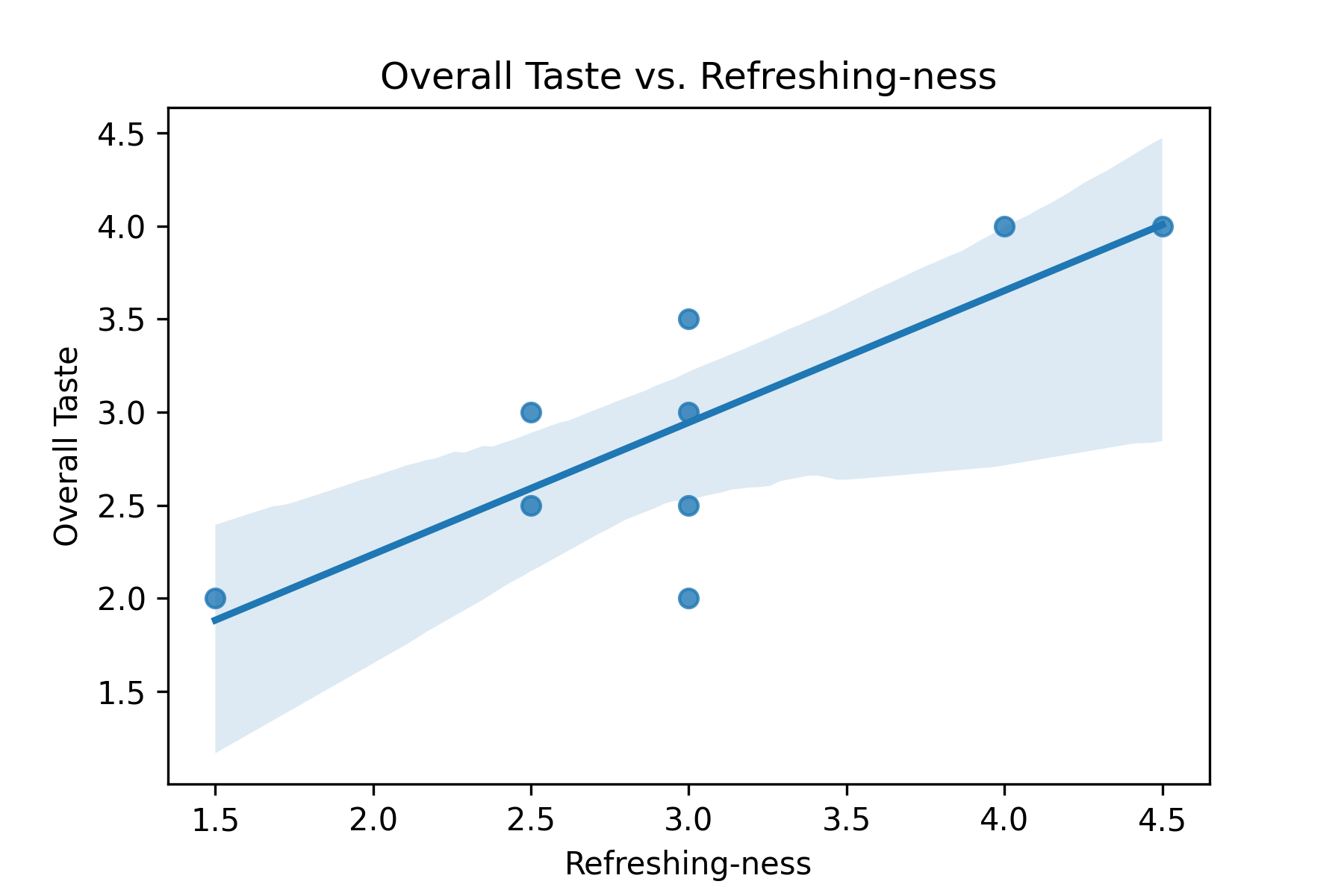
There is clearly a positive correlation between how refreshing a lemonade is and how it tastes overall. This can be seen in both the heatmaps for the respective ratings, and in the simple regression plot above. Again, this is an intuitive result, as lemonade is something that you want to quench your thirst after coming inside from a hot summer day. It should be refreshing! It's just nice to see it in the data too.
Final Results
Of the 9 batches, my favorite overall was the 40/225 mixture, which is a slightly more dilute version of Chef John's recipe. This is the recipe breakdown by mass, per lemon:
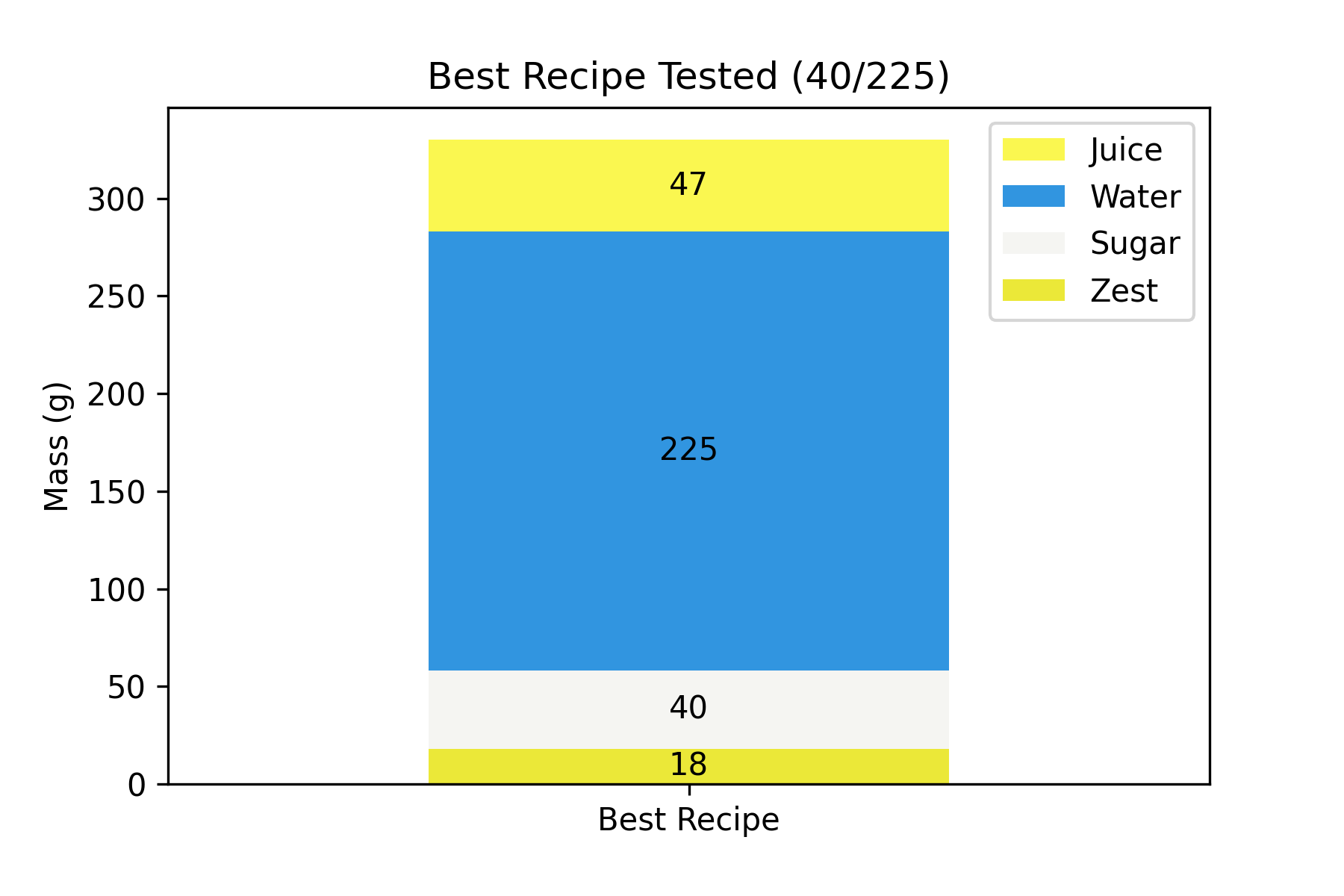
This recipe demonstrates the logical conclusion of the principles derived from my tastings. Consider the following chain of thought:
- An overall good-tasting lemonade is refreshing
- A refreshing lemonade is not acidic
- To make lemonade not taste acidic, it must be sweet
- Incidentally, a sweeter lemonade tastes more like lemons
Conclusion: In a general sense, a good lemonade should be sweet.
Obviously, this condlusion contains a large asterisk that personal tastes differ. For instance, I prefer a more diluted lemonade than Chef John, and in the future I may even opt for a smaller amount of sugar, say 35 g instead of 40 g. However, our results are similar enough that it does not feel crazy to say that there is some element of universality to our conclusions. While I hope to continue fine-tuning this recipe, I am happy with the results so far and feel that I have learned a lot about the process of recipe development. It is a lot of tedious work, and I have a newfound respect for the people who do it professionally! The whole process left me with quite the mess...
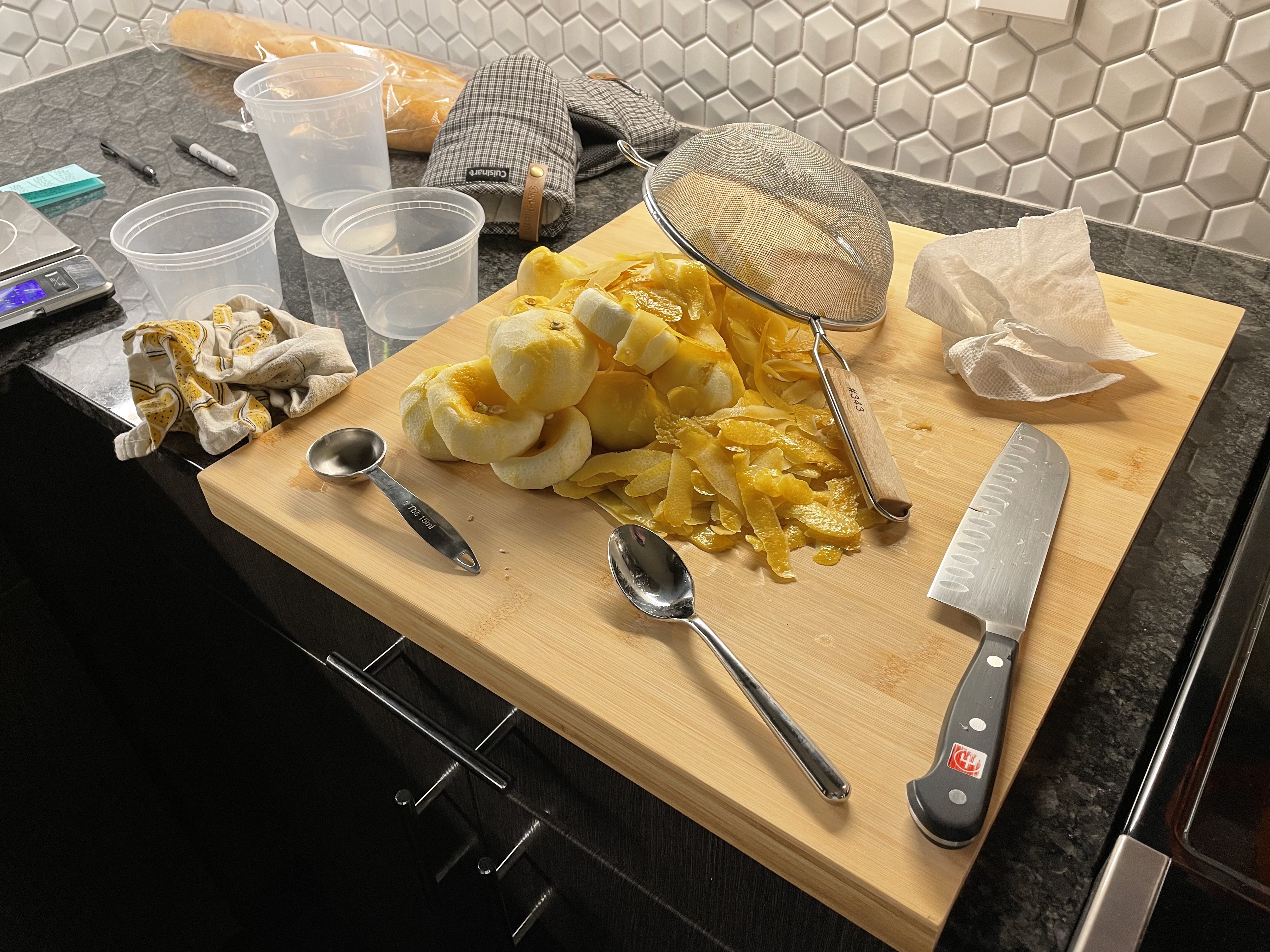
Note on Calibration
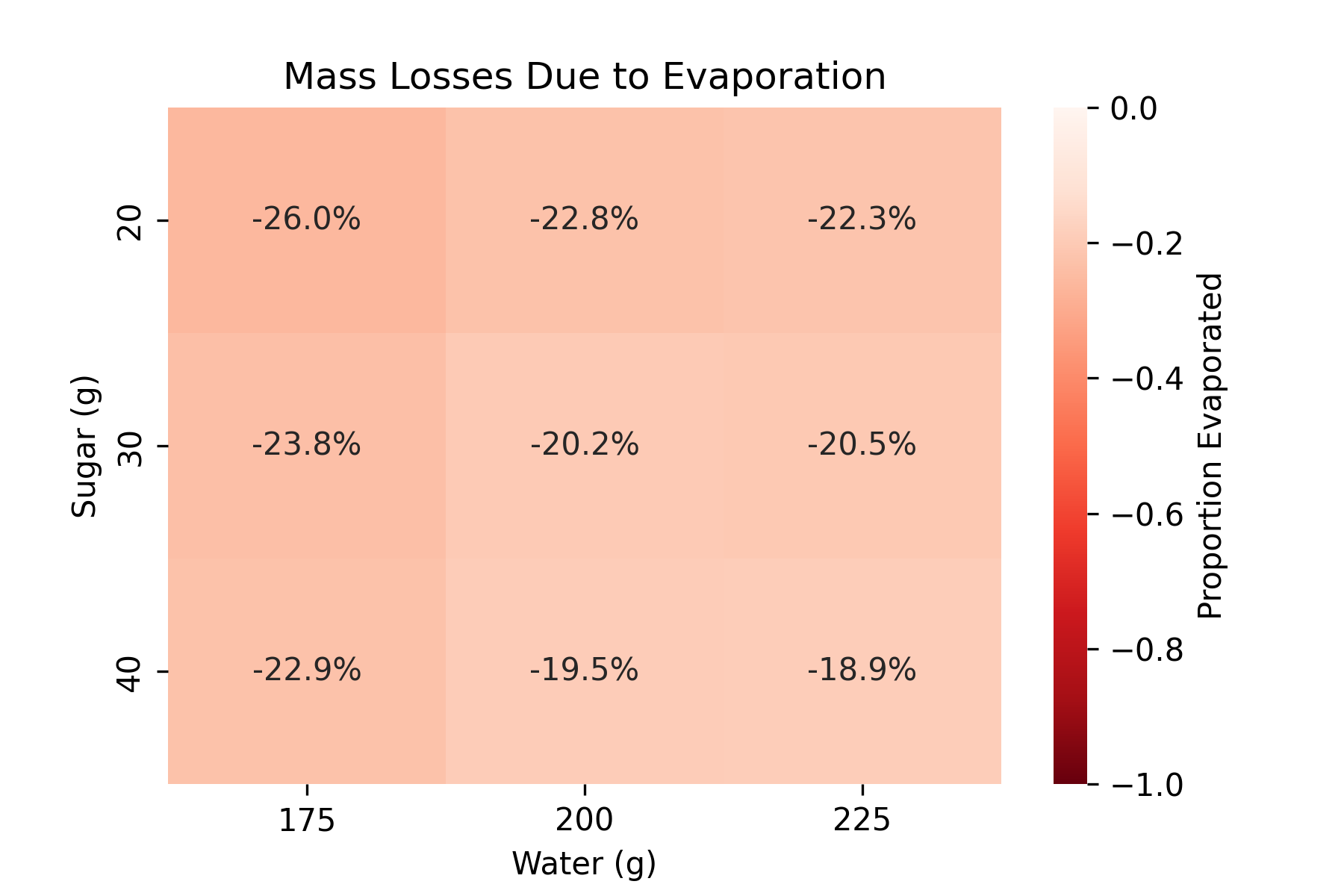
I am slightly concerned that my experimental setup was not well suited to this experiment, and has thrown off my results in a significant way. There is a sizable gap between the total mass of the ingredients and the overall yield. About 20% of the expected final yield (the combined masses of the sugar, juice, and water) was lost in each batch. That is a large difference which, if someone else's setup didn't replicate exactly, would likely result in a very different end product. After all, 175 g of water is about 20% less than 225 g of water, and those amounts of water gave very different results.
What happened is that when I ran this experiment, I was still moving into my new apartment, and I didn't have a lot of pots and pans. All I had for this experiment was my dutch oven. Considering I was only boiling a small amount of water in it over a very large surface area and the cast iron has a very high thermal capacity, I think there was excessive carry-over boiling which artificially dried out my batches.
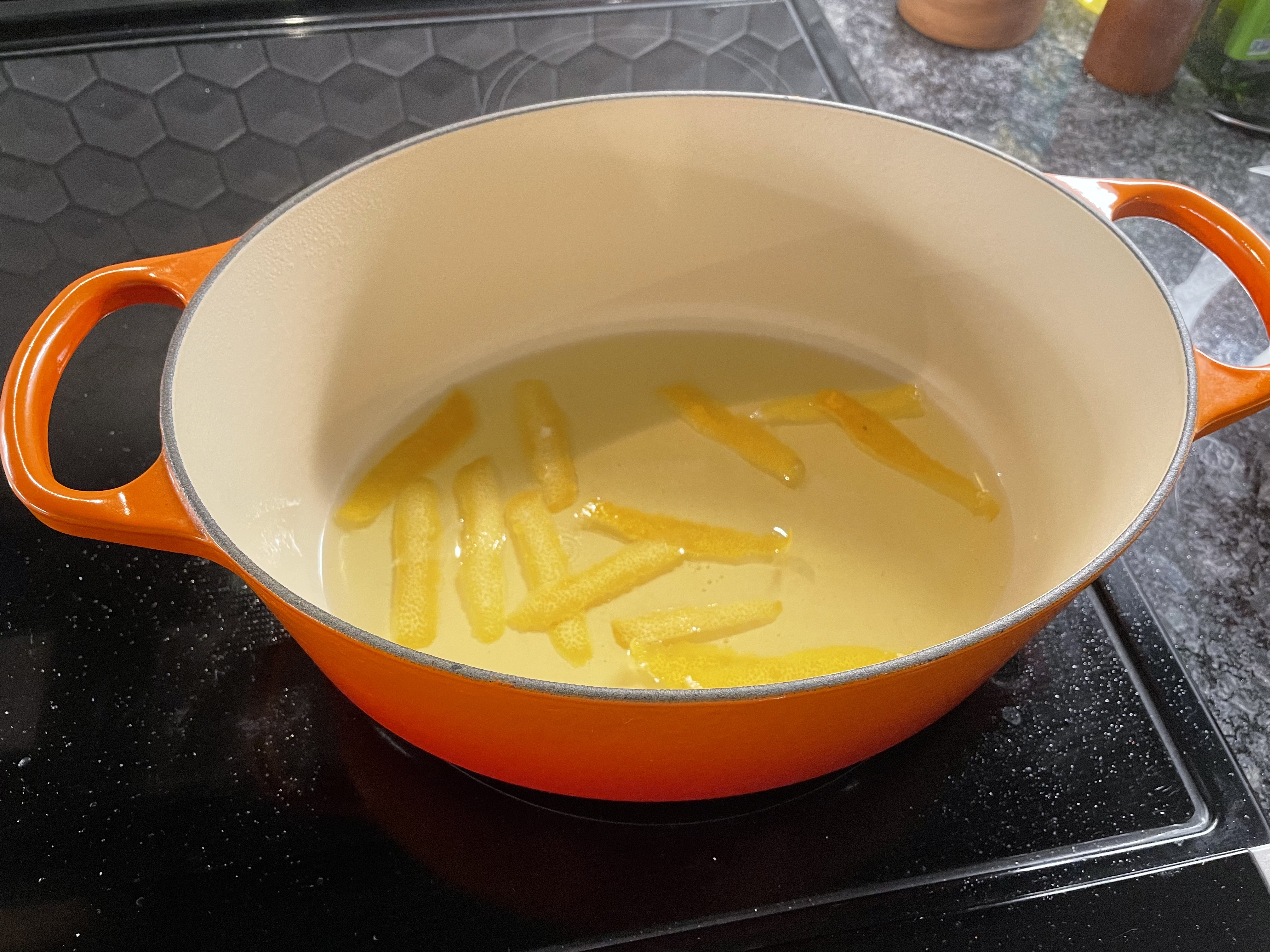
Luckily, we can calibrate for this on any new setup. Basically all of this lost mass must come from the water since it's obviously not the sugar, nor the essential oils (an insignificant mass). Also, the batch is already cool when the juice is added, so there is no loss there. No, it must be the water. So, to calibrate, simply bring a known mass of water to a boil on your stove, kill the heat, let it sit for 5 minutes, and mass again. Calculate the percentage loss as 1 - (Mass After Boiling) / (Mass Before Boiling), and calculate the corresponding mass of water you'd have to start with to end up with as much water as this experiment using the equation below:
Your Water Mass = (My Water Mass) x (1 - My Percent Lost) / (1 - Your Percent Lost)
Also, maybe the recipe can be adjusted to only bring the water up to a simmer? How much does it actually matter that it comes to a boil? Is there additional flavor extraction? And how much do the essential oils evaporate? These are all open questions which I do not know the answer to. Just options and considerations to be open to.
"Super" Lemonade
Yield: 1 quart
Ingredients:
- 4 large lemons (enough to yield ~3/4 c lemon juice)
- 3/4 c sugar (160 g)
- 3 3/4 c water (900 g)
Directions:
- Zest lemons and cover in sugar in an airtight container. Let rest to form oleo-saccharum, about 2-4 hours.
- Bring water to a boil, then kill heat and add oleo-saccharum (including zest). Stir to combine and let steep for 5 minutes.
- Strain out mixture into bowl and let cool for 30 minutes.
- Add juice of peeled lemons to cooled mixture.
- Chill in fridge until cold, or overnight.
- Serve over ice.
Cooking
Lemon Chemistry Drink Oleo-saccharum